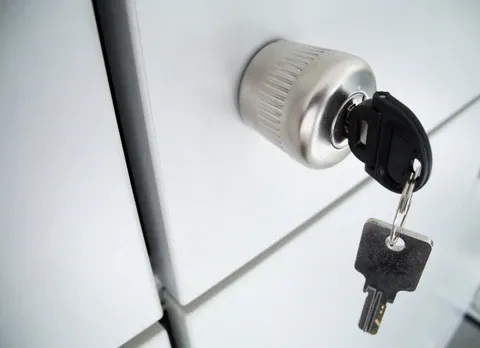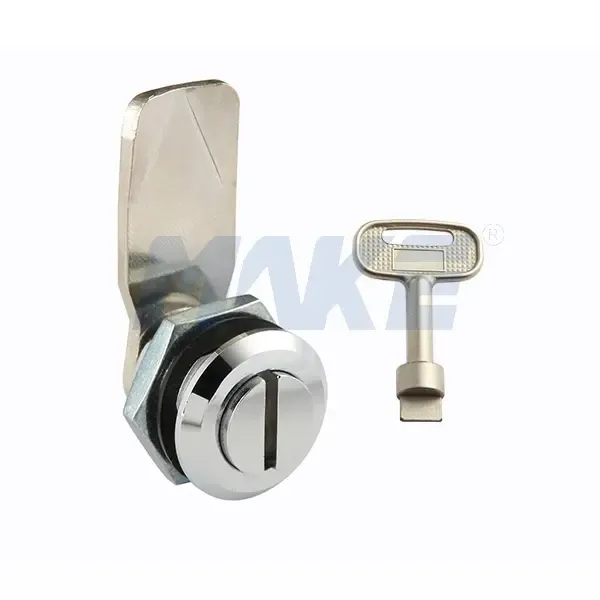Furniture and cabinet locks may seem like small components, but they play an indispensable role in keeping valuable belongings safe and secure. From office cabinets storing confidential documents to display cases showcasing luxury items, these locks ensure protection, privacy, and peace of mind.
As modern furniture design evolves, so too has the technology behind locking systems. Today’s furniture and cabinet locks combine durability, innovation, and convenience to meet diverse needs across residential, commercial, and industrial environments.
In this comprehensive news feature, we explore the different types of furniture and cabinet locks available, their specific applications, the key factors that determine safety and performance, and the best practices for installation and maintenance. Whether you are a furniture manufacturer, designer, or end user, understanding these locks will help ensure the right level of protection for your spaces.

Furniture and cabinet locks come in a wide variety of designs, mechanisms, and materials. Each type caters to different applications and security requirements. Selecting the right lock depends on factors such as furniture design, usage frequency, material type, and the desired level of protection.
Below are the most common and reliable types of furniture and cabinet locks used across industries:
Flush locks are commonly used for metal cabinets, storage units, and industrial furniture that demand a clean, integrated design. They are mounted flush with the surface of the cabinet door, providing both aesthetic appeal and functional efficiency.
Key Features:
Constructed from robust steel with a plastic body for enhanced corrosion resistance.
Designed for easy rod assembly with a specialized fastening plate.
Clip-on body simplifies installation and removal.
Includes a stainless steel dust cap to prevent contamination and ensure longevity.
Available in both keyed alike and keyed to differ configurations, allowing flexible access control.
Typical Applications:
Ideal for heavy-duty cabinets, industrial storage furniture, and equipment enclosures that require frequent access and high reliability.
Glass door slide locks are designed specifically for display cabinets, glass cupboards, and retail showcases where aesthetics and visibility are as important as security.
Key Features:
Made from durable materials such as zinc alloy, die-cast zinc, nylon, or steel.
Compact design enables easy installation without damaging delicate glass surfaces.
Offered in keyed alike and keyed to differ options.
Designed for smooth locking action and silent operation.
Typical Applications:
Perfect for glass display cases, retail shelving, and sliding glass doors in commercial or residential spaces where protection and presentation must go hand in hand.
Cam locks are among the most popular furniture locking mechanisms due to their versatility and simplicity. They are compact, durable, and suitable for a wide range of furniture types.
Key Features:
High-quality 90-degree cam rotation for reliable locking and unlocking.
Built with five-disk tumblers to enhance security.
Equipped with a stainless steel bezel for improved resistance to wear and corrosion.
Supplied keyed alike for convenient multi-unit access.
Typical Applications:
Commonly found in display units, security cabinets, office furniture, and stock cupboards where everyday access control is essential.

Striking plates are essential accessories that work in tandem with furniture locks to ensure a tight and secure door closure.
Key Features:
Angled design for optimized alignment and reliable locking performance.
Made from high-strength steel to prevent tampering and maintain long-term durability.
Screw-fixing installation for enhanced stability and resistance to forced entry.
Typical Applications:
Ideal for furniture drawers, hinged cabinet doors, and storage enclosures that require consistent and secure closure.
Lock safety is determined by several critical factors that go beyond simple key-and-bolt mechanisms. A high-quality furniture or cabinet lock must provide consistent performance, durability, and resistance to tampering or unauthorized access.
Here are the main factors that define reliable lock performance:
Tight Closing Mechanism – The lock must ensure a snug fit to prevent gaps between doors or drawers, which could compromise security.
Smooth Operation – Even after thousands of uses, the lock should operate smoothly without sticking or jamming.
Durability – High-quality materials such as stainless steel or zinc alloy offer better resistance to wear, corrosion, and environmental conditions.
Tamper Resistance – Locks must be designed to prevent unauthorized disassembly or manipulation, ensuring consistent protection.
Compliance with Standards – Leading lock manufacturers must meet international safety and quality standards to guarantee product reliability.
Lock manufacturers today continuously innovate to meet the growing need for safety, durability, and convenience. Below are some examples of modern solutions that enhance furniture security:
Cylindrical Insert Locks – Used in metal boxes designed for storing cash, confidential files, or valuables. These locks meet strict safety standards and often include anti-drill or anti-pick features.
Patent Locks with Replaceable Inserts – Commonly used in public buildings, offices, and institutions. These locks allow insert replacement without removing the entire mechanism, offering flexibility in managing multiple access levels.
Rotating Rod Locks – Designed with multiple locking points, including top and bottom hooks connected by a rotary rod. These locks are suitable for tall cabinets, lockers, and metal enclosures where two-point security is preferred.
Combination Locks – A separate class of locks combining mechanical precision with customizable encryption. Users can set thousands of unique combinations, reducing dependence on keys while maintaining robust protection. Available in both mortise and surface-mounted variants.
These solutions demonstrate how lock manufacturers are integrating engineering precision, innovation, and ergonomic design to provide better safety for modern furniture systems.
Proper installation is crucial for ensuring a lock’s long-term functionality and performance. Even the highest-quality lock can fail if it is not installed accurately. Here’s a step-by-step guide to achieving a professional finish:
Begin by measuring the thickness and alignment of the door or drawer. Mark the precise placement where the lock and strike plate will be installed.
Use the correct drill bit size as per the manufacturer’s guidelines. For mortise locks, carefully chisel out a recess for the lock body. Precision is key to ensuring a secure fit.
Before fastening, verify that all components—latch, cam, and strike plate—are properly aligned. Misalignment can lead to operational issues such as sticking or mislocking.
Use durable screws to fasten the lock and strike plate firmly in place. The lock should sit flush with the surface, providing a clean finish without gaps.
Once installed, test the lock multiple times. Ensure smooth key rotation, proper latch engagement, and reliable closure before declaring the job complete.
By following these steps, you can extend the lock’s operational lifespan and minimize maintenance issues in the future.
Routine maintenance ensures your locks remain reliable and secure for years. Even small preventive steps can make a big difference in performance and durability.
Dust, dirt, and small debris can accumulate inside the lock, causing stiffness or malfunction. Use a soft brush, dry cloth, or compressed air to remove debris. Avoid using water or corrosive cleaners.
Apply a small amount of graphite powder or lock-specific lubricant to the keyhole and moving parts. Avoid oil-based lubricants as they can attract dirt and cause buildup.
Worn or bent keys can damage internal lock components. Replace damaged keys immediately to prevent jamming or cylinder wear.
Regularly check for any loose screws or fittings. Furniture can vibrate over time due to use, which may loosen the lock mechanism. Keeping fasteners tight ensures consistent security.
For metal locks, especially those exposed to humidity or outdoor environments, inspect for signs of corrosion. If necessary, apply an anti-corrosion spray or consider upgrading to stainless steel models for added durability.
With the increasing demand for smart and secure furniture solutions, the lock industry is undergoing rapid innovation. Some key trends include:
Modern furniture locks now integrate RFID cards, PIN codes, or even Bluetooth connectivity for keyless access. These are popular in coworking spaces, hotels, and corporate environments.
Fingerprint-recognition locks are being adopted in high-end furniture and confidential storage applications, offering advanced protection and user convenience.
Manufacturers are shifting toward eco-friendly materials and finishes that reduce environmental impact while maintaining durability.
Modular lock systems allow users to customize access levels and integrate multiple locking points for enhanced security management.
These developments reflect a broader shift toward intelligent, sustainable, and user-friendly locking systems in furniture manufacturing and interior design.
Furniture and cabinet locks are far more than simple hardware accessories — they are essential components that uphold safety, privacy, and efficiency in everyday life. From traditional cam locks and sliding glass door locks to advanced smart and combination locks, today’s market offers a wide spectrum of choices to meet every application and budget.
By selecting the right lock, installing it correctly, and maintaining it regularly, users can ensure long-lasting performance and dependable protection. As technology continues to evolve, furniture locks will only become smarter, more secure, and better integrated with modern living and working environments.
Whether you’re designing an elegant glass showcase or manufacturing industrial steel cabinets, investing in the right locking solution is a small step that delivers big peace of mind.
